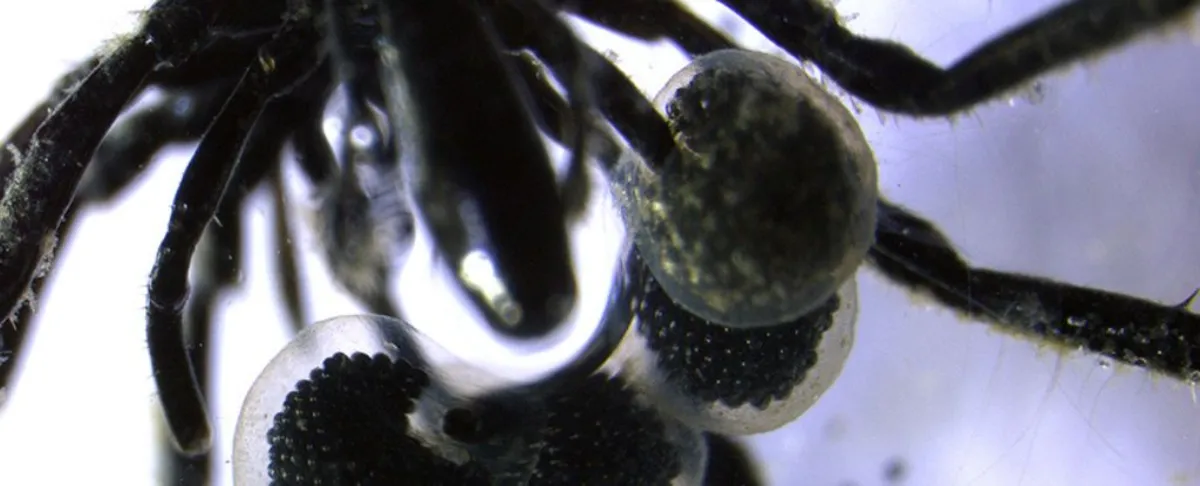
In a remarkable discovery, researchers have identified three new species of deep sea 'spiders' that engage in a unique symbiotic relationship with methane-eating bacteria. This fascinating partnership enables these marine arthropods to thrive in the dark depths of the ocean, where traditional sources of energy, such as sunlight, are nonexistent.
Deep sea creatures face significant challenges when it comes to sourcing energy. Unlike terrestrial animals that rely on a solar-powered food chain, organisms living at depths beyond 1,000 meters (about 3,300 feet) must innovate to survive. The sea spiders, part of the marine arthropod family, occupy these lightless environments, and their name can be misleading. Despite their appearance, they are neither true spiders nor arachnids; instead, they are characterized by small bodies from which four to six pairs of legs extend.
The new species were discovered by a research team led by Bianca Dal Bó from Occidental College in the United States. All three species belong to the genus Sericosura and are uniquely adapted to live on methane seeps, where the potent greenhouse gas escapes from the ocean floor. Specimens were collected during remote-operated vehicle dives in 2021 and 2023 from two locations off the coast of Southern California—the Palos Verdes seep, located 397 meters below sea level, and the Del Mar seep, found at a depth of 1,018 meters. Additional specimens were retrieved from the Sanak seep, located an astonishing 2,020 meters underwater in Alaska.
At the heart of this discovery is the observation that the exoskeletons of all three new sea spider species host dense arrays of three types of bacteria capable of converting methane and methanol into carbon and energy. This symbiosis likely explains why the sea spiders remain close to the methane seeps; they rely on these bacteria as a crucial food source. Lab experiments confirmed these findings, revealing that nearly all sea spider-associated methane-oxidizing bacteria assimilated carbon from methane or methanol, but not carbon dioxide (CO2).
By tagging methane and carbon dioxide with distinct carbon isotopes, researchers were able to trace their passage through the sea spiders’ bodies. Within just five days, significant incorporation of the carbon isotope was evident in the digestive tissues of the spiders, indicating that they consumed the methane-oxidizing bacteria directly from their bodies. This phenomenon is particularly intriguing, as it differs from other methane-dependent ecosystems where animals rely on bacteria in a more passive manner.
Interestingly, the sea spiders appear to cultivate and directly consume their methanophilic bacteria, a behavior not previously documented. Other marine organisms, such as sea sponges, sabellid worms, and beard worms, have developed symbiotic relationships with similar bacteria, but no other species has been found to host all three types of methane-oxidizing bacteria. Despite the vast distances separating the Alaskan and Southern Californian seeps, the bacterial 'gardens' of the sea spiders were functionally identical, suggesting a potential vertical transmission of these bacteria across generations.
Remarkably, half of the specimens collected from the Del Mar seep were male, and all were carrying egg sacs. This unprecedented level of fertility hints at the success of the methane-eating bacteria farm, as the larvae will emerge with a ready-made supply of bacteria to cultivate for sustenance. This relationship between the sea spiders and their microbial companions is a captivating reminder of the diverse survival strategies that exist in the deep sea, showcasing nature's adaptability in even the most challenging environments.
Overall, these findings not only enhance our understanding of deep sea ecosystems but also highlight the incredible innovations that marine life has developed to survive in the absence of sunlight. The discovery of these new sea spider species and their unique symbiotic relationships opens up new avenues for research and deepens our appreciation for the complexities of life in the ocean's depths.